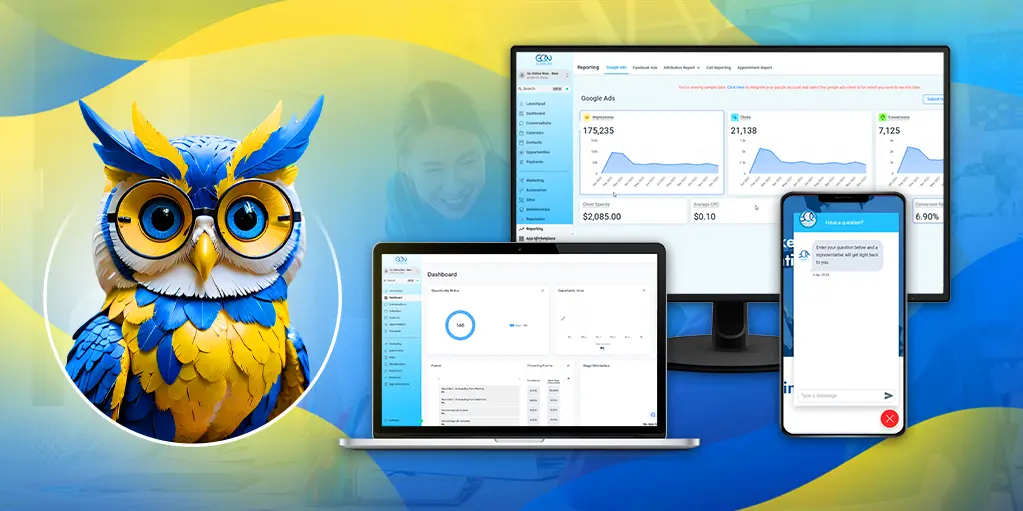E-commerce websites are a vital part of any company’s success in the current digital era. But given that more and more customers are making purchases on their mobile devices, it’s crucial that these websites are made with mobile users in mind. When it comes to this, responsive web design is important.
A website must look amazing and work well on any device, whether it be a desktop computer, tablet, or smartphone. Responsive web design is a technique for creating websites that adjusts to various screen sizes and resolutions.
E-commerce features are frequently dependent on how users engage with websites. You must be able to view your site from every angle, in every size, and on every device in order for it to adapt and engage users.
Here are some reasons why responsive web design is critical for e-commerce websites
Mobile-first Design and User Experience
More than half of all website traffic is now coming from mobile devices, making it critical now more than ever to design for mobile. Your e-commerce website will be optimised for mobile devices thanks to responsive web design, giving users a smooth and simple experience. You can improve user engagement, raise conversion rates, and eventually increase your bottom line by giving mobile design priority.
Mobile devices are the most often used of all internet-accessible gadgets. According to recent research, mobile devices now account for over half of all website traffic. This data underlines how crucial it is to design with mobile users in mind.
When an e-commerce website is developed with mobile devices in mind, it is then scaled up for use on larger screens, such as those seen on desktops and laptops. This design strategy gives mobile devices the top priority over desktops and laptops, resulting in the optimal user experience for users accessing the website using a mobile device.
An important tool for achieving mobile-first design is responsive web design. E-commerce websites may adjust to various screen sizes and resolutions by adopting responsive web design approaches, guaranteeing that the website appears and works properly on all devices.
A mobile-first design is crucial for more reasons than simply supporting the growing number of mobile device users. Providing a seamless and simple user experience that promotes engagement and conversions is also important. E-commerce websites may build a streamlined, user-friendly interface that is simple to navigate and use, improving user engagement and increasing conversion rates, by prioritising mobile design.
In conclusion, e-commerce websites must use mobile-first design because it is no longer an option. Since mobile devices now account for more than half of all website traffic, companies must give mobile design top priority if they want to guarantee a seamless and simple user experience. The secret to attaining mobile-first design is a responsive web design, which may enhance user engagement, boost conversions, and eventually increase your bottom line.
Page Speed Optimization
Responsive web design guarantees that your e-commerce website runs swiftly on any device in addition to providing an excellent user experience. First, a slow-loading website can lead to high bounce rates and missed sales, which makes page speed optimization crucial. Second, responsive web design can boost your search engine rankings since search engines like Google give priority to websites that load quickly in their search results.
Optimization of page load times is essential to responsive web design. Users want websites to load quickly regardless of the device they are using in the fast-paced digital world of today. A website that loads slowly not only irritates visitors but also increases bounce rates and decreases sales.
Therefore, improving page performance is essential for two reasons. First of all, a slow-loading website might deter visitors from making purchases by creating a bad customer experience. The income and reputation of a company may suffer greatly as a result of this high bounce rate.
Second, quick-loading websites are given preference in search results by engines like Google. Google’s Speed Update, which became a ranking criterion for mobile searches in 2018, was implemented in 2018. This upgrade penalised websites with slow load times and gave preference to those that load quickly on mobile devices.
E-commerce websites can decrease the amount of time it takes for a page to load by using page speed optimization techniques like image compression, fewer HTTP requests, and code minification. This will help the sites avoid the drawbacks of slow load times.
The optimisation of page speed depends heavily on responsive web design. E-commerce websites may make sure that they load quickly and give users a good experience by optimising pictures, employing code that is compatible with many devices, and utilising strategies like lazy loading.
In conclusion, responsive web design must include page speed optimization. A website that loads quickly can increase user interaction, decrease bounce rates, and boost search engine results. E-commerce websites may guarantee they offer a great customer experience and avoid the negative effects of poor load times by employing page performance optimisation strategies and using responsive web design.
Flexible Images and Videos
The flexibility of graphics and videos is another advantage of responsive web design. The quality and dimensions of photos and movies can therefore be preserved while being adjusted to various screen sizes and resolutions. High-quality images are frequently vital for showing products and persuading clients to make a purchase, therefore this is important for e-commerce websites.
Video and image flexibility is a key component of responsive web design. Users use e-commerce websites on a variety of devices with various screen sizes and resolutions in today’s mobile-first environment. Images and videos on the website must be optimised for various devices as a result.
The quality and visual proportions are maintained across a variety of devices thanks to flexible photos and videos. This implies that people can watch videos and photographs on their selected device without the visuals degrading. For e-commerce websites, this uniformity is crucial because attractive graphics have a big influence on whether or not a customer decides to buy something.
E-commerce websites need to use responsive image and video strategies in order to produce flexible images and flexible videos. For instance, CSS can be used to scale images according to screen size and resolution. This guarantees that the image retains its quality across various devices and appears proportionate.
Using HTML5 video tags, which automatically change the video size based on the screen size and resolution, is another way to make videos flexible. This guarantees that the video will preserve its quality and aspect ratio on any device.
In order to deliver a seamless user experience across various devices, flexible images and flexible videos are crucial for e-commerce websites. E-commerce websites can make sure that images maintain their quality and dimensions by adopting flexible image and flexible video strategies, which will enhance engagement and conversions.
Content Prioritization and Touch-friendly Design
Setting content prioritization is essential because mobile devices have small screens. Responsive web design allows you to prioritise content according on the user’s device and screen size, ensuring that they see the most crucial information first. The touch-friendly design of your website makes it easy for users to interact with it, especially on smaller displays.
Content prioritization and touch-friendly design are two essential elements of responsive web design. Due to the constrained screen of real estate on mobile devices, users might not have the patience or time to browse a whole website.
Content prioritization is the practice of categorising website content based on its importance and user relevance. By utilising responsive web design techniques, e-commerce websites can prioritise content based on the device and screen size. This ensures that consumers get the most crucial information first, enhancing user experience and increasing engagement.
For example, on a mobile device, the most important information, such as product images, prices, and reviews, should be shown at the top of the page. This will allow users to quickly obtain the information they need without having to browse the full page.
Because users interact with websites differently on mobile devices than they do on desktops, e-commerce websites must also be touch-friendly. Touch-friendly design entails making website elements bigger and easy to tap so that users may interact with it easily even on smaller displays. Making the buttons larger, using fewer input fields, and providing visual clues when an element is tapped are all necessary to achieve this.
In conclusion, content prioritization and touch-friendly design are essential for a positive user experience on mobile devices. By utilising responsive web design techniques, e-commerce websites can prioritize content based on the device and screen size and ensure that website functionalities are touch-friendly. This leads to greater engagement, greater user satisfaction, and ultimately increase conversion rates.
Device Compatibility and Search Engine Optimization
Your e-commerce website will be compatible with all devices, including any newer ones and screen sizes that might be developed in the future, thanks to responsive web design. This means that regardless of the device being used to access it, your website will continue to appear and work flawlessly. Moreover, responsive web design raises your search engine optimisation because mobile-friendly websites are given preference by search engines.
Search engine optimisation and device compatibility are essential components of responsive web design for e-commerce websites. Websites must be accessible on all devices, including any new ones and screen sizes that might be developed in the future, due to the rapid evolution of technology.
E-commerce businesses can make sure that their website is functional with all devices by employing responsive web design approaches. In other words, users can view the website on any device, and it will still look great and work perfectly. Its compatibility enhances user experience, which boosts engagement and increases conversions.
Also, mobile-friendly websites are given preference in search results by engines like Google. As a result, if your e-commerce website is not mobile-friendly, search engines may penalise it, lowering its rankings and decreasing its visibility. Yet, e-commerce websites can enhance their search engine optimisation through the use of responsive web design, resulting in greater search engine rankings and increased visibility.
In conclusion, search engine optimisation and device compatibility are important considerations for e-commerce websites. In addition to ensuring a flawless user experience across all platforms, responsive web design enhances search engine optimization, boosting your website’s visibility and search engine results.
Conversion Rate Optimization
Last but not least, responsive site design can raise conversion rates. Responsive web design can assist to boost client trust and confidence by offering a smooth user experience, quick-loading pages, and high-quality visuals, ultimately resulting in increased sales and conversions.
The process of increasing the number of website visitors who perform a desired activity, such as making a purchase or filling out a form, is known as conversion rate optimization (CRO). By offering a smooth user experience, quick page loads, and high-quality visuals, responsive web design plays a vital part in CRO for e-commerce businesses.
Your e-commerce website will load swiftly on any device thanks to responsive web design, lowering bounce rates and increasing the likelihood that users will stay on your site. A quick-loading website increases visitor satisfaction, which in turn increases visitor trust in your brand, which ultimately results in higher conversion rates.
High-quality images are also essential for showing products and persuading customers to buy. Images and videos may adapt to various screen resolutions and sizes with responsive web design without sacrificing their quality or proportions. By enabling visitors to see your products in their finest light, you can enhance engagement and conversion rates.
Overall, e-commerce companies can increase their conversion rates by utilising responsive web design strategies. Responsive web design can assist to boost client trust and confidence by offering a smooth user experience, quick-loading pages, and high-quality visuals, ultimately resulting in increased sales and conversions.
In conclusion
Any e-commerce website that wants to flourish in today’s mobile-driven environment must have responsive web design. Your e-commerce website can be made to be successful by giving attention to mobile-first design, user experience, page speed optimisation, flexible pictures and videos, content priority, touch-friendly design, device compatibility, search engine optimization, and conversion rate optimization.
Curious how online marketing could help your organization reach its marketing goals? Contact me if you want to grow your business, get more clients and spend less money on professional and effective online marketing activities by filling out the form https://bit.ly/3p0bBS5 or book a zoom meeting at your convenience, https://bit.ly/3TR3Wn6 and let me answer all your queries.





